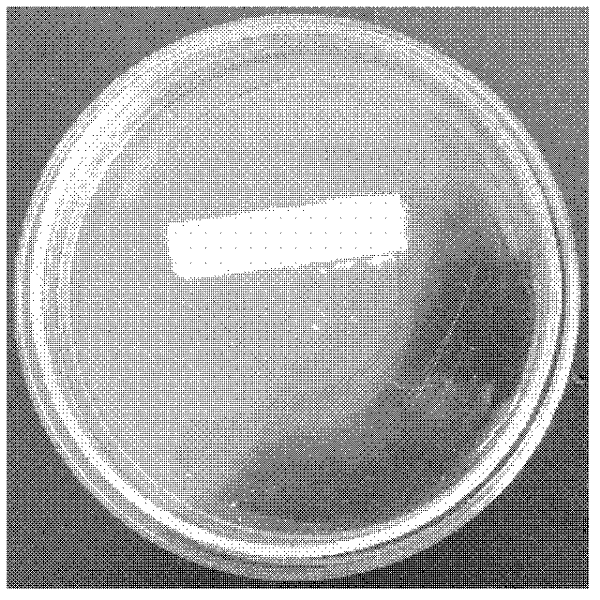Method for measuring migration amount of harmful substances in printing ink
A technology of harmful substances and migration amount, which is applied in measurement devices, instruments, scientific instruments, etc., can solve the problems of not fully representing the migration of harmful components, not suitable for printing samples to be tested, time-consuming and laborious printing, etc., to achieve low cost , The effect of small deviation of harmful ingredients and high flexibility
- Summary
- Abstract
- Description
- Claims
- Application Information
AI Technical Summary
Problems solved by technology
Method used
Image
Examples
Embodiment 1
[0023] The migration and detection of the plasticizer DBP in the ink to the milk powder includes the following steps:
[0024] (1) Sample preparation
[0025] Accurately weigh 0.25g of each of the four-color inks, add 0.1mL of DBP standard substance, stir and mix thoroughly, and print on 240g / m 2 On the coated surface of white cardboard, after the newly printed paper sample is dried naturally for 10 days, the uniform part of the ink strip is cut into 4×1cm samples for future use (such as figure 1 shown). In order to exclude the influence of printing factors on the concentration and uniformity of the plasticizer in the proofs, the proofs printed in the same batch are only used for the determination and migration of the initial concentration of the plasticizer at the same temperature.
[0026] (2) Migration test
[0027] Weigh 0.5g of milk powder and evenly cover the unprinted surface of the sample sheet (such as figure 2 shown), and then put the sample in a closed glass co...
Embodiment 2
[0045]The migration and detection of the plasticizer ATBC in the ink to the food simulant Tenax includes the following steps:
[0046] (1) Sample preparation
[0047] Accurately weigh 0.25g of each of the four-color inks, add 0.1mL of ATBC standard substance, stir and mix thoroughly, and print on 400g / m2 with a pressure of 300N using a C1 offset printing suitability tester 2 On the coated surface of white cardboard, the newly printed paper sample is naturally dried for 10 days, and the uniform part of the ink strip is cut into 4×1cm samples for later use. In order to exclude the influence of printing factors on the concentration and uniformity of the plasticizer in the proofs, the proofs printed in the same batch are only used for the determination and migration of the initial concentration of the plasticizer at the same temperature.
[0048] (2) Migration test
[0049] Weigh 0.16g of food simulant Tenax (International Laboratory Company, USA) to evenly cover the unprinted s...
Embodiment 3
[0057] Migration and detection of plasticizers DEHP and DOP in ink to food simulant Tenax, including the following steps:
[0058] (1) Sample preparation
[0059] Accurately weigh 0.25g of each of the four-color inks, add 0.02mL of DEHP standard product and 0.04mL of DOP standard product, stir and mix thoroughly, and print on the coated surface of white cardboard with a pressure of 1000N with a C1 offset printing suitability tester. After the prepared paper sample was dried naturally for 10 days, the uniform part of the ink strip was cut into 4×1cm samples for later use. In order to exclude the influence of printing factors on the concentration and uniformity of the plasticizer in the proofs, the proofs printed in the same batch are only used for the determination and migration of the initial concentration of the plasticizer at the same temperature.
[0060] (2) Migration test
[0061] Weigh 0.16g of food simulant Tenax to evenly cover the unprinted surface of the sample she...
PUM
 Login to View More
Login to View More Abstract
Description
Claims
Application Information
 Login to View More
Login to View More - R&D Engineer
- R&D Manager
- IP Professional
- Industry Leading Data Capabilities
- Powerful AI technology
- Patent DNA Extraction
Browse by: Latest US Patents, China's latest patents, Technical Efficacy Thesaurus, Application Domain, Technology Topic, Popular Technical Reports.
© 2024 PatSnap. All rights reserved.Legal|Privacy policy|Modern Slavery Act Transparency Statement|Sitemap|About US| Contact US: help@patsnap.com










